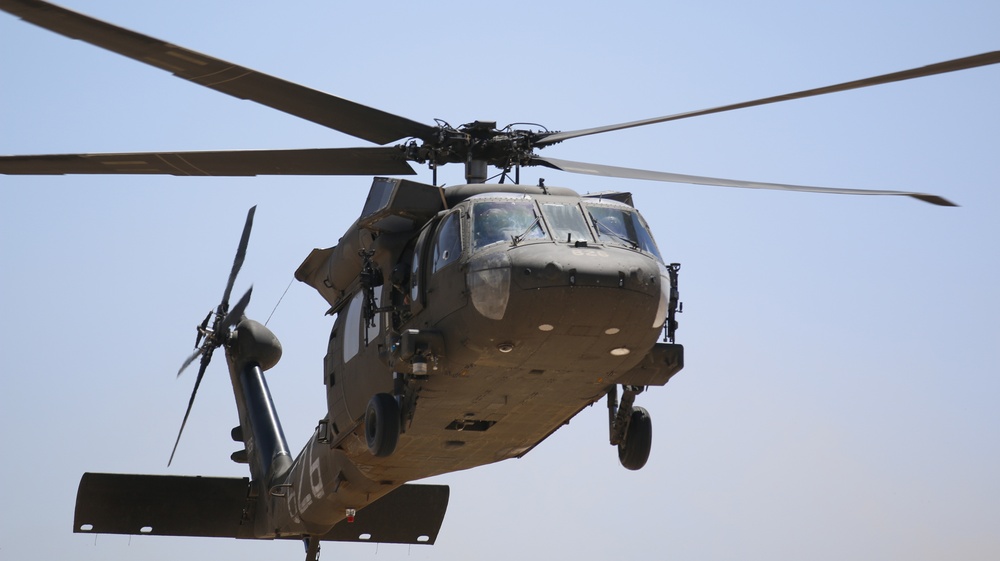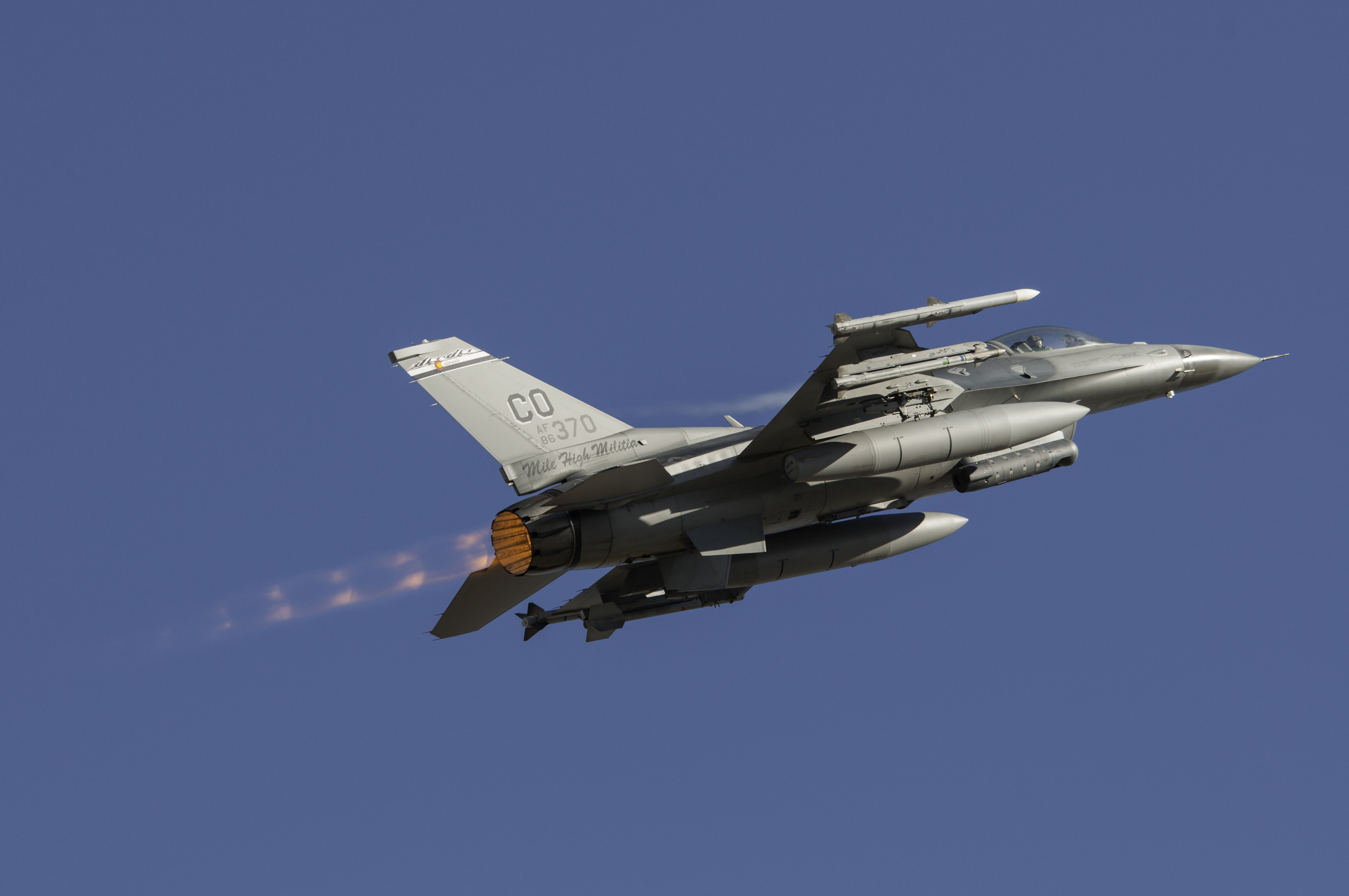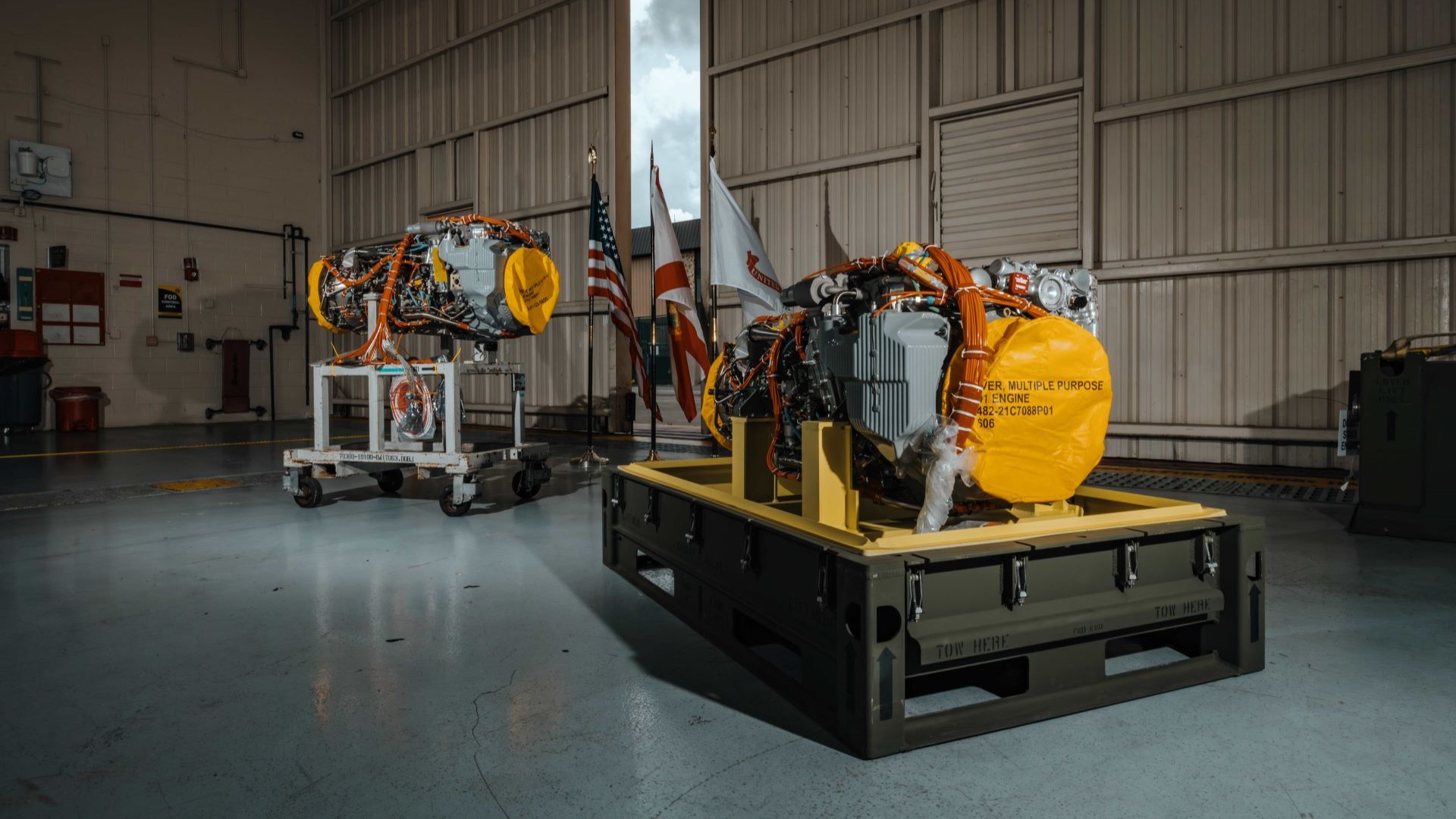Headline Act: At U.K. Air Shows, GE Aerospace Signals Its Determination to Keep Writing Military Aviation History
July 18, 2024 | by Chris Noon
Festival season is in full swing in the United Kingdom, with Glastonbury, the Isle of Wight, and Reading all welcoming hundreds of thousands of rock fans this summer. It’s also something of a jubilee year for the country’s famous air shows, with the annual Royal International Air Tattoo (RIAT) taking place in Gloucestershire on the weekend of July 19–21, followed immediately by the biennial Farnborough International Airshow (FIA), July 22–16. If an air show can be compared to a rock festival, then GE Aerospace is one of the perennial headliners.
This will be GE Aerospace’s first appearance at either show as a stand-alone company after separating from GE Vernova in April. But the company will do much more than set up a booth and show the crowds some engines. It will demonstrate its unique scale and reach, communicate its special sense of purpose, and show how it intends to write the next chapter of military aviation history. To that end, its Defense and Systems business will maintain a regular drumbeat of announcements throughout the two air shows.
“We are looking forward to showcasing our global presence, reaffirming our support for the transatlantic military alliance, and promoting sustainable defense aviation, among other endeavors,” says Rita Flaherty, vice president of global sales and business development for GE Aerospace Defense and Systems. “GE Aerospace’s role in shaping the future of flight is stronger than ever and we are excited to highlight our advancements.”
Global Positioning
There will be continual reminders of GE Aerospace’s global footprint at RIAT, which takes place at a Royal Air Force air base in Gloucestershire, and FIA, which is staged on a sprawling airfield southwest of London. Together with its joint ventures, GE Aerospace boasts an installed base of more than 26,000 military aircraft engines and a global service network to support its offerings.
Its engines don’t just power legendary U.S. military aircraft such as the F-16 Fighting Falcon, whose 50th anniversary is a key theme of this year’s RIAT. They also provide the competitive edge for a range of international fighter programs throughout Europe and Asia. For example, GE Aerospace’s afterburning turbofan F414 engine will power South Korea’s KF-21 Boramae, an advanced multi-role combat aircraft, scheduled to debut in 2032. The same engine will power the HAL Tejas Mark 2, the aircraft being designed and developed to replace multiple strike fighters in the Indian Air Force. Its highly versatile F404 engine powers Turkey’s TAI Hürjet, a light combat aircraft whose prototype took its maiden flight in April 2023.
GE Aerospace will also use the air shows as a platform to show its vital role in shaping the future of flight. This month the ink is still drying on the U.S. Army’s acceptance of two T901-GE-900 next-generation rotorcraft engines for the Improved Turbine Engine Program’s UH-60 Black Hawk integration and testing. The agreement is the dawn of a new era: GE Aerospace’s T700 engine has powered Black Hawk and Apache helicopters for the past four decades, which has resulted in more than 100 million flight hours of combat-proven experience.

GE Aerospace also recently announced the successful development and testing of a new hypersonic dual-mode ramjet in less than 11 months. The demonstration of the new, cutting-edge technology could enable high-speed flight and longer range across numerous multi-mission aircraft.
Among other technologies for the military aircraft of tomorrow, earlier this year GE Aerospace completed the latest series of testing on its XA100 adaptive cycle engine to gather additional data and advance the next-generation technology for future combat aircraft. Adaptive cycle engines are critical to ensuring that combat aircraft maintain their superiority; they provide 30% greater range and generate significantly more thermal management than today’s most advanced combat engine.
Wherever the location and whatever the requirements of its global customers, GE Aerospace will apply the same proprietary lean operating model throughout all of its businesses. Called Flight Deck, it’s an approach that is focused on driving safety, quality, delivery, and cost improvements. “Our customers understand how this operating model is helping GE Aerospace drive better results for them and deliver on its purpose today, tomorrow, and in the future,” says Flaherty.
NATO Turns 75
A major theme of this year’s RIAT air show will be NATO’s celebration of 75 years of collective defense. Since its creation on April 4, 1949, the transatlantic alliance has grown from 12 founding members to 32 member countries. GE Aerospace is proud of its long and close relationship with the alliance, with the company’s F110 engines powering the collective fleet of F-15EX and F-16 fighters, the F404 engine powering F/A-18 aircraft for a variety of alliance air forces, and the T700 in the Black Hawk and Apache helicopters.
That partnership is set to endure and deepen.

GE Aerospace has just completed a study to assess the potential powerplant options for the next-generation military helicopter being considered by the NATO Support and Procurement Agency. RIAT will also celebrate the 50th anniversary of one of NATO’s trusty bulwarks, the F-16. GE Aerospace, whose F110 engine currently powers 70% of the Lockheed Martin F-16C/Ds currently in service globally, is co-sponsoring the celebration.
GE Aerospace is also beefing up its relationship with the U.K., one of NATO’s founding members. It has just signed the nation’s Armed Forces Covenant, a pledge to treat those who serve or have served, and their families, with fairness and respect. And the company has donated $150,000 to U.S. and U.K. veterans’ charities as part of its mission to help veteran communities transition to civilian lives. The donation will be shared by Hiring Our Heroes in the U.S. and the Forces Employment Charity in the U.K.

Sustainable Defense
Finally, sustainable defense aviation will also be on GE Aerospace’s Defense and Systems’ RIAT agenda. At the Tattoo, GE Aerospace leadership will sign the U.K. Ministry of Defence’s Aviation Net Zero Charter. By doing so, the company commits to collaborating and sharing best practices in developing sustainable aviation fuel, boosting aircraft efficiency, and fostering innovation.
But GE Aerospace’s role will extend beyond the defense sector. As part of its pledge, it will share research and development insights linked to reducing the impact of the entire U.K. aviation industry. It is also committed to improving life-cycle sustainability considerations in the sector, establishing commercial frameworks that enhance sustainability metrics, and identifying opportunities that boost sustainability and positively impact U.K. prosperity. “Through this agreement, we will positively contribute to the U.K. government’s net zero ambitions and the Royal Air Force’s aspirational goal to achieve net zero by 2040,” says Flaherty.





